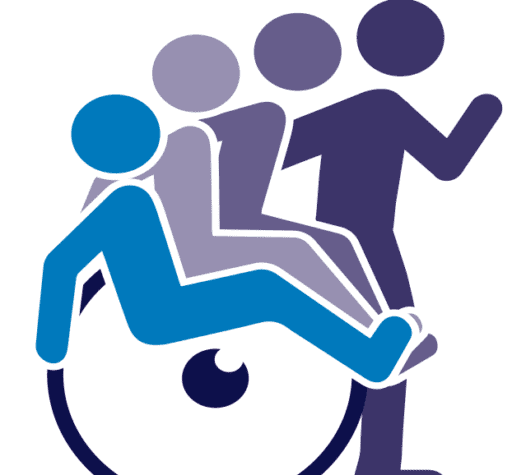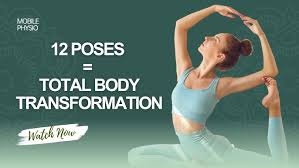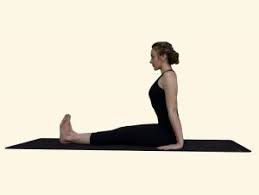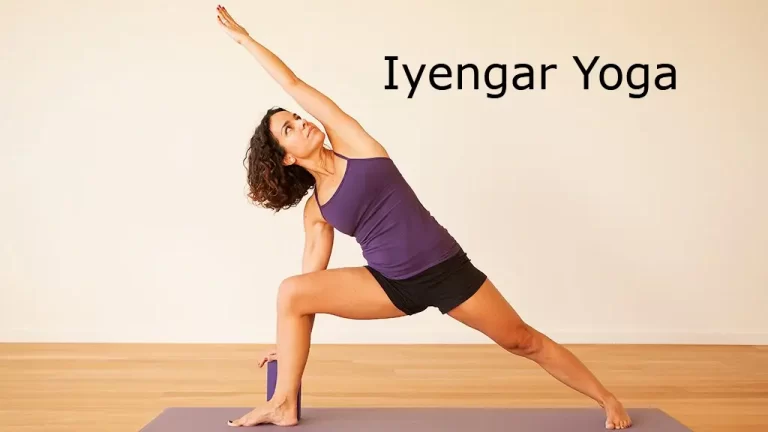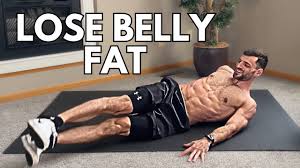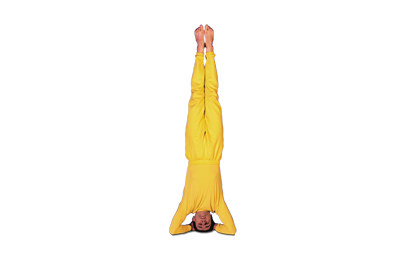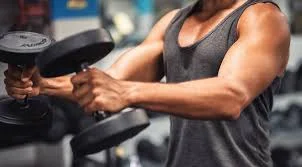23 Best Oblique Strengthening Exercises
Table of Contents
Introduction:
Exercises for the obliques strengthen the internal and external obliques, which are the muscles located on either side of your abdomen. By supporting the spine during movement, strengthening the obliques helps avoid injuries while also enhancing posture and athletic performance.
Including oblique workouts in your regimen is crucial for a strong and effective core, regardless of your goals: better balance, improved athletic performance, or a toned stomach.
Oblique Strengthening Exercises:
Side planks:
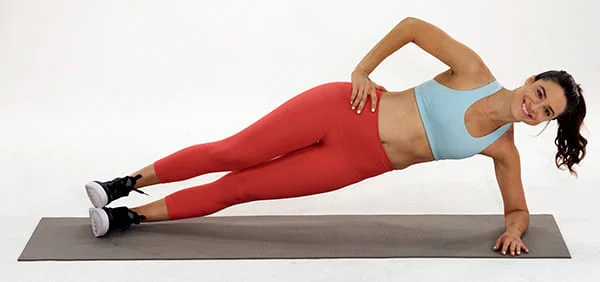
An effective core exercise that targets the oblique muscles in particular is the side plank. This bodyweight exercise is a great way to increase general core stability and balance because it works the shoulders, hips, and glutes. You can test your obliques’ ability to stay in alignment and withstand rotation by keeping your body in a straight line on one side.
Side planks can aid in improving posture, enhancing athletic performance, and reducing the risk of lower back injury. By changing the duration, adding leg lifts, or using weights, they can be made more difficult or simpler for beginners.
Trunk Rotations:
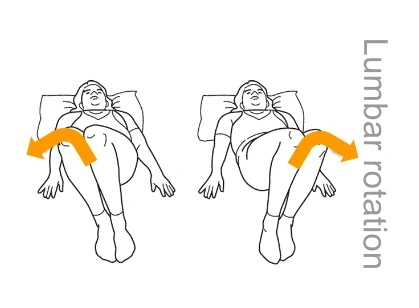
Trunk rotations are a dynamic core workout that uses twisting motions of the body to efficiently target the oblique muscles. This movement is incredibly practical because it resembles commonplace motions like turning, reaching, and throwing. Rotations of the trunk increase rotational strength, improve spinal mobility, and foster improved upper- and lower-body coordination.
They are appropriate for all fitness levels and can be done with or without additional resistance, such as a cable machine, resistance band, or medicine ball. Including trunk rotations in your routine lowers your chance of injury during physical activity and helps you develop a strong, stable core.
Single-leg side plank:
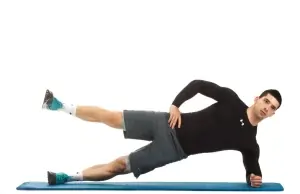
A more difficult version of the classic side plank, the single-leg side plank works your glutes, hips, and stabilizing muscles in addition to your oblique muscles. Maintaining the side plank position while lifting the top leg improves muscular endurance, balance, and core stability. Additionally, it increases control over lateral motions and strengthens the lower body.
The single-leg side plank is particularly helpful for anyone who wants to develop a strong, functioning core, such as athletes. Maintain a straight body alignment and prevent your hips from sagging to prevent strain.
Side Bends:
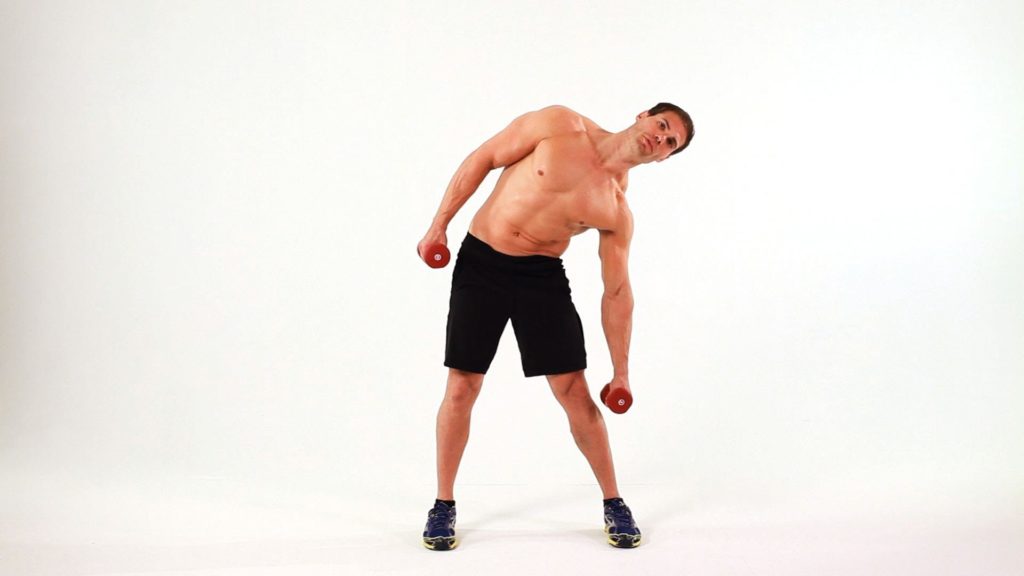
A traditional exercise that isolates the lateral flexion of the spine, side bends directly target the oblique muscles. The torso is bent to one side during this exercise, and the side abdominal muscles are used to raise and straighten the body.
They can be done using only your body weight or, for more intensity, with resistance like dumbbells, kettlebells, or a cable machine. When performed correctly, side bends can help improve posture, strengthen the obliques, and promote improved movement mechanics in day-to-day tasks.
Standing Side Crunch:
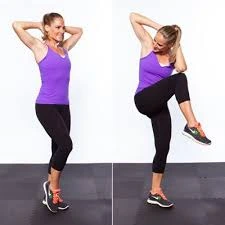
A bodyweight exercise that works the oblique muscles as well as the hip flexors and lower abdominals is the standing side crunch. This exercise is low-impact and easy on the back because it is done standing, unlike typical crunches that are done on the floor. By bringing your elbow and knee together on the same side, you can perform an exercise that works your obliques by bending sideways.
Standing side crunches may be done anywhere without the need for any equipment and can increase balance, coordination, and core strength. They are perfect for keeping the body moving in several planes while introducing variation to your core exercises.
Planks:
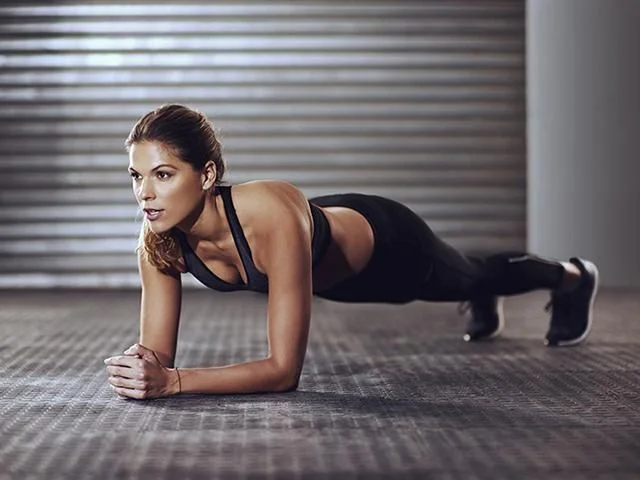
A basic core-strengthening exercise, planks work the obliques, rectus abdominis, transverse abdominis, shoulders, and glutes, among other muscular groups. The obliques are also activated as they fight to maintain balance and prevent rotation, even though the typical plank primarily targets the front of the core.
Planks are a great way to improve posture, lower your chance of developing back pain, and gain more control over your body. Any fitness level may readily adapt or advance through them.
Wall Ball:
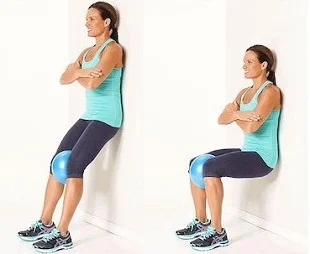
It mostly works the legs, shoulders, glutes, and core, which includes the obliques, particularly when rotation is included in the throw. A medicine ball is thrown explosively against a wall while squatting down, and it is then caught as you fall into the subsequent squat.
Exercises using wall balls that are executed with a twist or angled throw effectively activate the oblique muscles, which are responsible for producing and managing rotational power. Because of this, wall ball is a useful functional exercise for increasing cardiovascular endurance, strengthening the core, and boosting sports performance.
Side Kicks:
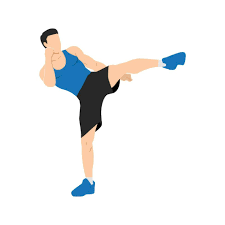
A dynamic workout that works the hips, glutes, and legs, side kicks also develop the oblique muscles. The obliques must stabilize the body and maintain balance during this regulated exercise, which includes elevating one leg out to the side.
Side kicks increase hip mobility, strengthen the core, and improve balance and coordination. They can be done more forcefully for a power and cardio component or more slowly for muscular control. Side kicks are a great complement to any core or full-body training regimen and are appropriate for all fitness levels.
Forward Lunges With Rotation:
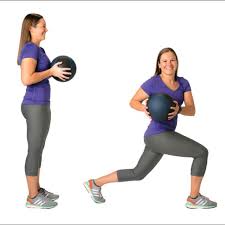
A compound exercise that targets the obliques in particular, forward lunges with rotation, combines lower-body strength training with core activation. The side abdominal muscles are used to control and support the movement when you rotate your torso toward the lead leg as you step forward into a lunge.
This rotating element enhances functional strength, balance, and coordination by simulating real-world motions. A dumbbell or medicine ball can be added to up the difficulty and intensity even more.
Heel tap:
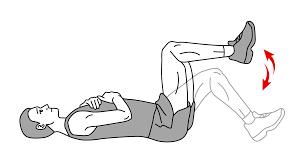
An excellent core isolation exercise that targets the oblique muscles in particular is the heel tap. You touch each heel with your fingertips as you go from side to side. This lateral motion helps to tone and strengthen the sides of your abdomen by engaging the obliques through controlled side flexion.
Additionally, heel taps increase core endurance and engage the lower abdominal muscles. They are perfect for both novice and expert exercisers who want to shape and stabilize their core because they are low-impact and equipment-free.
Mountain climber:
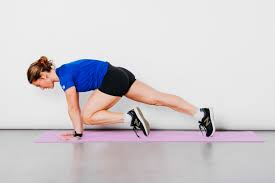
Mountain climbers are a full-body, high-intensity workout that works the shoulders, chest, and legs in addition to the core, which includes the obliques. This exercise, which is done in a plank position, includes quickly and alternately pushing the knees toward the chest. During the rapid motion, the obliques help to control lateral movement and stabilize the torso.
Mountain climbers are great for increasing cardiovascular endurance, strengthening the core, and improving coordination. They are an excellent complement to strength and cardio-focused exercises and can be adjusted for all levels of fitness.
Standing core stabilizer:
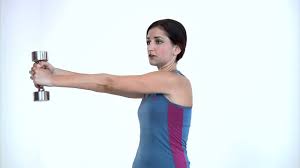
The purpose of the standing core stabilizer is to improve posture and balance while strengthening the core, particularly the obliques. This movement, which is usually performed standing, uses weights, cables, or resistance bands to resist rotation.
Your oblique muscles anchor the spine and torso isometrically by keeping your arms outstretched and using your core to stop movement. This workout improves core control, replicates real-life movements, and promotes improved performance in everyday activities and sports.
Sit-Ups:

A traditional abdominal workout, sit-ups mostly work the rectus abdominis, although they also partially work the obliques and hip flexors. Sit-ups, which involve raising the upper body from a prone posture to a seated one, call for coordination and core strength. Sit-ups have the potential to more directly engage the oblique muscles when performed with a small twist at the top or by integrating diagonal movements.
Posture, trunk stability, and core endurance are all enhanced by this workout. Although it works well, using the right form is crucial to prevent lower back or neck pain. To make sit-ups more challenging, you might alter the tempo or add resistance.
Russian Twists:
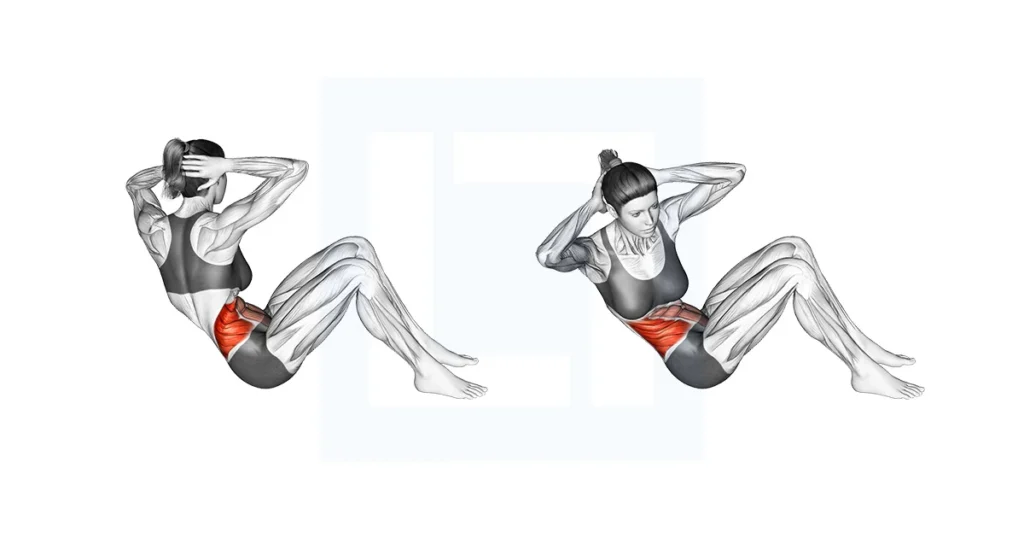
Russian twists are a well-liked core workout that uses controlled rotation to target the oblique muscles. This exercise, which is typically done while gripping a weight like a medicine ball or dumbbell, includes twisting the torso from side to side while seated with the feet on the floor or raised and the torso slightly leaned back. They are particularly helpful for sportsmen who need strong obliques for twisting and turning sports. To optimize benefits and minimize injury, proper form is essential.
Spiderman push-ups:
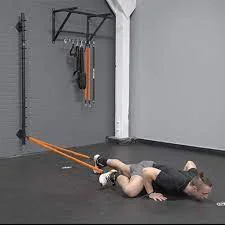
The oblique muscles in particular, which stabilize and control the twisting motion, are used in this exercise together with the chest, shoulders, and triceps. Spiderman push-ups are perfect for increasing total-body fitness since they increase functional strength, mobility, and coordination. They also provide a typical push-up practice, some variation, and aid in the development of a strong, balanced core.
Wood Choppers:
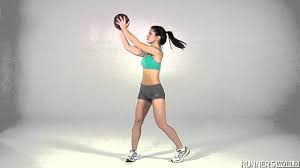
Wood choppers, which simulate chopping wood with a diagonal twisting motion, are a vigorous core workout that effectively works the obliques. This exercise includes dragging a weight across the body from a high to low or low to high position, such as a medicine ball, cable, or resistance band. The rotation is a great full-body functional exercise because it works the oblique muscles as well as the abs, shoulders, and hips.
Wood choppers are particularly useful for athletic movements like swinging, throwing, and turning because they increase rotational strength, core stability, and coordination. They work well to build a more defined waistline and strengthen the sides of the core.
Bird dog:
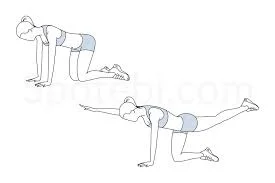
The bird dog is a low-impact, controlled core exercise that tones the shoulders, glutes, lower back, and obliques. The exercise, which is done from an all-fours (hands and knees) position, includes simultaneously extending one arm and the opposing leg while maintaining a stable spine. When the limbs move, the oblique muscles are essential for preserving balance and preventing rotation.
Bird dog exercises are particularly helpful for injury prevention and rehabilitation because they enhance posture, coordination, and core stability. Bird dogs are a great technique to develop a strong, balanced core without putting undue strain on the lower back, and they are appropriate for people of all fitness levels.
Single-arm toe touch:
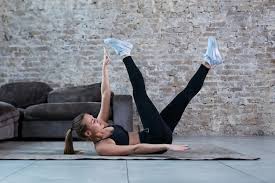
The single-arm toe touch is a dynamic core exercise that enhances flexibility and coordination while targeting the rectus abdominis, hip flexors, and obliques. This exercise tests cross-body control and core stability. It is performed by lying on your back and simultaneously raising one leg and the opposing arm to touch your toes.
The oblique muscles are activated by the twisting motion needed to stretch across the body, which helps to define and strengthen the sides of the core. This is a great workout for increasing mobility, body awareness, and functional strength. Depending on your level of fitness, you can perform it with or without additional resistance.
Dead Bug:
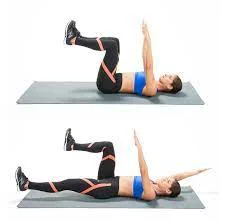
The dead bug is a core-stabilizing exercise that minimizes lower back strain while targeting the obliques and other deep abdominal muscles. The exercise, which is done while lying on your back with your arms and legs raised, includes slowly and deliberately lowering the opposing arm and leg toward the floor while maintaining an engaged core.
The obliques improve balance and coordination by stabilizing the trunk and preventing rotation. Dead bugs are perfect for strengthening your core, enhancing your motor skills, and reaffirming the position of your spine. They are particularly helpful for novices, people recovering from injuries, or anybody looking for a secure and efficient method of core training.
Bear Crawl:

The exercise, which is done on all fours with the knees slightly raised off the floor, includes crawling forward or backward while simultaneously moving the opposing hands and feet. Bear crawls are great for functional training because they foster the development of core strength, muscular endurance, and agility. Additionally, this exercise is excellent for enhancing general athleticism, body control, and posture.
Sprinter Situp:
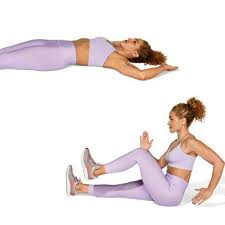
An intense core workout that works the rectus abdominis and obliques while also working the hip flexors and lower body is the sprinter sit-up. This exercise develops core strength, coordination, and power. It is performed by lying on your back and pushing yourself to sit up while driving one knee toward your chest and the opposing arm forward, simulating a sprinting motion.
The obliques are activated by the twisting motion as you climb, which improves balance and rotational control. For athletes or anyone wishing to increase their core stability, speed, and dynamic movement patterns, sprinter sit-ups are perfect. For more intensity, these can be done with resistance or bodyweight.
Side V-Up:
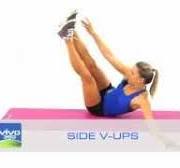
By combining lateral flexion and leg lift, the side V-up is an oblique-focused core exercise that efficiently works the side abdominal muscles. The exercise, which is done while lying on your side with your legs stacked and your arms in a supporting posture, includes raising your upper body and legs at the same time to create a “V.”
In addition to engaging the hip flexors and lower abs, this crunching motion targets the obliques deeply. Side V-ups are particularly useful for enhancing balance and lateral movement control, as well as for strengthening, defining, and stabilizing the core. They can be made more difficult with more resistance or adjusted for novices.
Extended Side Angle Pose:
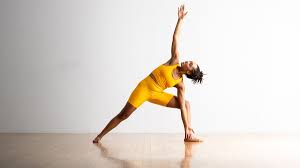
The yoga pose known as Extended Side Angle Pose (Utthita Parsvakonasana) engages the oblique muscles deeply while strengthening and stretching the entire body. This posture uses lateral flexion and elongation to activate the obliques.
It is executed by lunging into one knee, reaching sideways over the body, and extending the opposing arm overhead. Additionally, it expands the chest and shoulders, increases hip flexibility, and strengthens the legs.
The Extended Side Angle Pose is a potent complement to yoga practices that emphasize strength, flexibility, and awareness because it improves balance, stability, and core control.
Conclusion:
Exercises for oblique strengthening are essential for developing a functioning and well-balanced core. These exercises improve posture, sports performance, and injury prevention, particularly in the lower back, by focusing on the muscles that control trunk rotation, lateral flexion, and core stability.
The obliques are developed thoroughly by using a range of motions, from static holds like side planks to dynamic workouts like wood choppers and Russian twists. Regular oblique training is crucial for a strong, stable, and robust core, regardless of your goals, whether they be increased fitness, better movement efficiency, or a more defined waistline.
FAQs
A multipurpose tool for strengthening the core and enhancing spinal stability is the Roman Chair. How to Use It: To extend your back, place your hips on the pad, hold your feet firmly, and descend your upper body forward. Rotate your torso while using your obliques to perform side bends.
Your obliques and core abs cooperate during a squat to help you stay balanced and prevent side-to-side swaying. Additionally, everyday activities that require side-to-side bending and rotation-based sports like baseball tossing become easier when your obliques are strong.
“Back pain may be exacerbated by an anteriorly tilted pelvis, which can result from weak oblique muscles stabilizing the pelvis.”
Strengthening the obliques will also help you achieve your cosmetic goals of reducing the waist.
Average time to recover
Some minor oblique strains can be healed in a few days, while more serious strains may need surgery and take three to four months to heal.
With your feet stacked on top of one another, balance on your forearm while lying on your side. Before switching to the opposite side, hold this stance for a predetermined amount of time.
The side plank is frequently disregarded, even though the normal plank is frequently used in core exercises. A typical plank doesn’t need you to activate your obliques, but it does work the front of your core.
Twist in Russian
With your arms extended straight in front of you, carefully twist your torso to one side, tapping the floor before turning around and repeating on the opposite side.
References:
- 30 exercises to make the most of your oblique workout. (2020, September 1). Healthline. https://www.healthline.com/health/fitness-exercise/oblique-workout
- Lawler, M. (2024b, October 23). The best exercises for stronger obliques. EverydayHealth.com. https://www.everydayhealth.com/fitness/the-best-exercises-for-stronger-obliques/
- Bunch, E. (1970, January 1). 13 oblique exercises to hit all 360 degrees of your core. https://www.onepeloton.com/blog/oblique-exercises
- Physio, S. (n.d.). Top 5 Exercises for Oblique Strength – Surrey Physio. Surrey Physio. https://www.surreyphysio.co.uk/top-5/top-5-exercises-for-oblique-strength/
